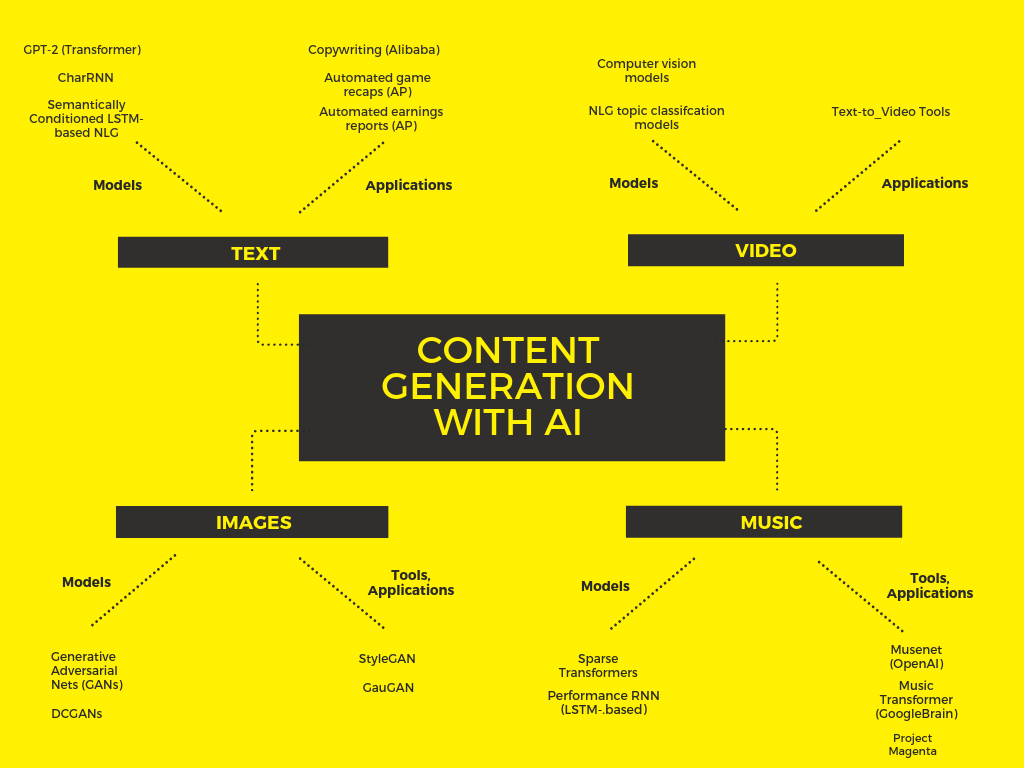Why AI Web Content Production Is a Game-Changer for Web Content Technique
The development of AI content development notes a critical shift in the landscape of web content technique, providing unmatched enhancements in efficiency, uniformity, and customization. As the digital atmosphere proceeds to advance, the ramifications of these advancements elevate critical concerns regarding the future of material method and its impact on consumer connections.
Improved Efficiency in Material Manufacturing
In the world of digital advertising, enhanced performance in web content manufacturing is vital for success. The rise of expert system (AI) has reinvented just how services come close to content development, enabling groups to produce top quality material at an unprecedented speed. AI tools improve different stages of web content manufacturing, from ideation to composing, editing, and optimization, thus reducing time and resource expense.

In addition, AI technologies promote partnership amongst team members by supplying centralized platforms for drafting, comments, and revisions. Inevitably, the assimilation of AI in content production not only improves effectiveness but additionally raises the overall high quality and performance of advertising initiatives.
Data-Driven Insights for Targeting
How can companies leverage data-driven understandings to refine their targeting methods? By making use of AI-driven analytics, companies can harness substantial amounts of information to determine and comprehend their target market more successfully. This method enables organizations to segment their audience based upon actions, preferences, and demographics, allowing them to produce even more pertinent material that resonates with specific groups.
Data-driven insights assist in the identification of patterns and patterns within consumer communications, exposing what web content executes ideal and why. By analyzing involvement metrics, click-through prices, and conversion data, organizations can adjust their methods to enhance the performance of their projects. This iterative procedure ensures that material is not only customized to audience assumptions yet is likewise maximized for the systems where it is taken in.
Moreover, anticipating analytics can anticipate future behavior, allowing organizations to proactively change their targeting approaches. By understanding what drives consumer interaction, brands can allocate sources much more effectively, ensuring that their marketing efforts generate optimal impact. Inevitably, leveraging data-driven insights empowers businesses to make informed decisions, resulting in enhanced targeting and, consequently, greater return on investment for their content methods.

Personalization at Scale
While numerous businesses acknowledge the significance of customization, attaining it at scale presents a considerable challenge. Standard methods commonly count on manual division and material curation, which can be both lengthy and ineffective (AI Content Creation). However, AI content creation tools are transforming this landscape by making it possible for organizations to deliver tailored experiences to huge target markets without giving up top quality or importance.
AI innovations can analyze considerable information collections to determine client choices, actions, and rate of interests. This data-driven method permits business to produce highly personalized content that resonates with individual consumers. For instance, AI algorithms can automatically generate individualized email campaigns, social networks messages, and landing pages, making sure that each piece of web content aligns with the unique needs of various target market sectors.
Moreover, AI can adjust content in real-time based on individual interactions and feedback, further boosting customization initiatives. This ability not only improves interaction rates yet likewise promotes more powerful client connections by making customers really feel comprehended and valued. By leveraging AI for customization at range, organizations can boost their advertising and marketing methods, enhance conversion rates, and inevitably drive development in a progressively competitive electronic landscape.
Regular Top Quality and Tone
Attaining consistent top quality and tone across all web content is vital for keeping brand honesty and promoting trust fund with audiences. In a period where customers are flooded with info, site link a natural voice aids in separating a brand from its competitors. AI content development tools succeed in guaranteeing harmony, as they can be configured to abide by particular guidelines pertaining to design, vocabulary, and messaging.
These tools evaluate existing web content to comprehend the nuances of a brand's voice, allowing them to produce brand-new material that straightens completely with recognized criteria. This uniformity not only boosts the customer experience but additionally grows a feeling of dependability. When audiences recognize a brand's unique tone and quality, they are most likely to involve and remain faithful.
In addition, AI-driven material services can monitor performance metrics, permitting brands to change their strategies in real-time while still protecting their distinct voice. By leveraging AI, companies can scale their webpage content efforts without sacrificing top quality, eventually leading to a more robust and constant brand visibility across different systems. This degree of consistency is necessary for building long lasting connections with customers and enhancing a brand's reputation in the industry.
Future-Proofing Material Approaches
Future-proofing content strategies is essential for brand names aiming to flourish in an ever-evolving electronic landscape. As customer actions and technological innovations continue to shift, companies need to adopt flexible, adaptive approaches to content development and circulation. Leveraging AI devices enables brands to analyze information fads and target market choices effectively, enabling prompt changes to material techniques.
Including AI into content methods not only boosts performance but likewise enhances personalization. By recognizing user communications and preferences, brands can customize their content to fulfill the details requirements of their target market, making sure relevance and engagement. AI-generated insights can anticipate future fads, allowing brands to stay ahead of the curve.
Purchasing diverse material formats, such as video clip, podcasts, and interactive material, is another critical facet of future-proofing. This strategy provides to differing customer preferences, guaranteeing that brand names reach target markets throughout various platforms. A strong Search engine optimization method, bolstered by AI abilities, will certainly enhance exposure and natural reach in a progressively competitive digital room.

Conclusion
In summary, AI material development works as a transformative force within web content approach by substantially improving effectiveness, enabling data-driven audience targeting, and promoting large customization. Its ability to preserve regular top quality and tone additional enhances brand identification - AI Content Creation. As digital landscapes continue to evolve, the review combination of AI into content production not only streamlines processes however additionally future-proofs approaches, making sure that services stay dexterous and responsive to emerging trends and customer preferences